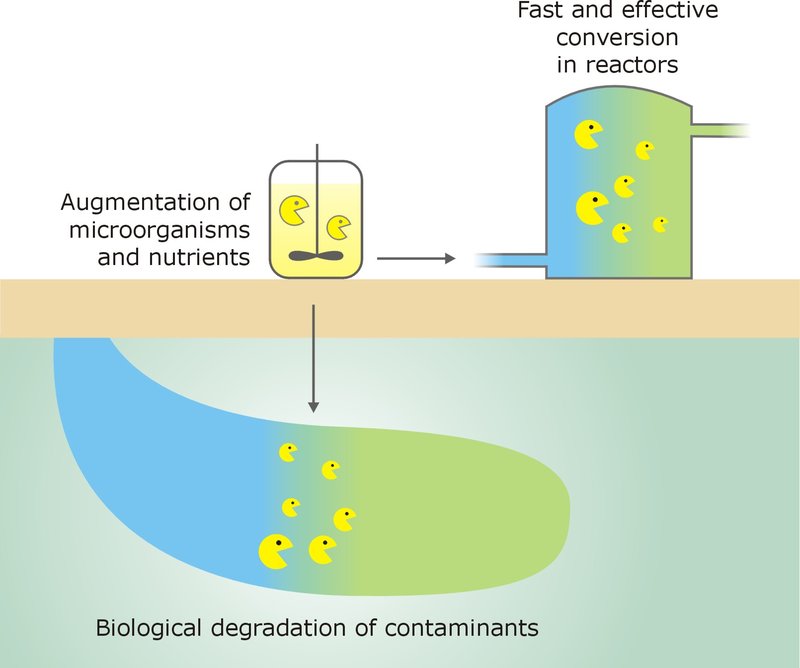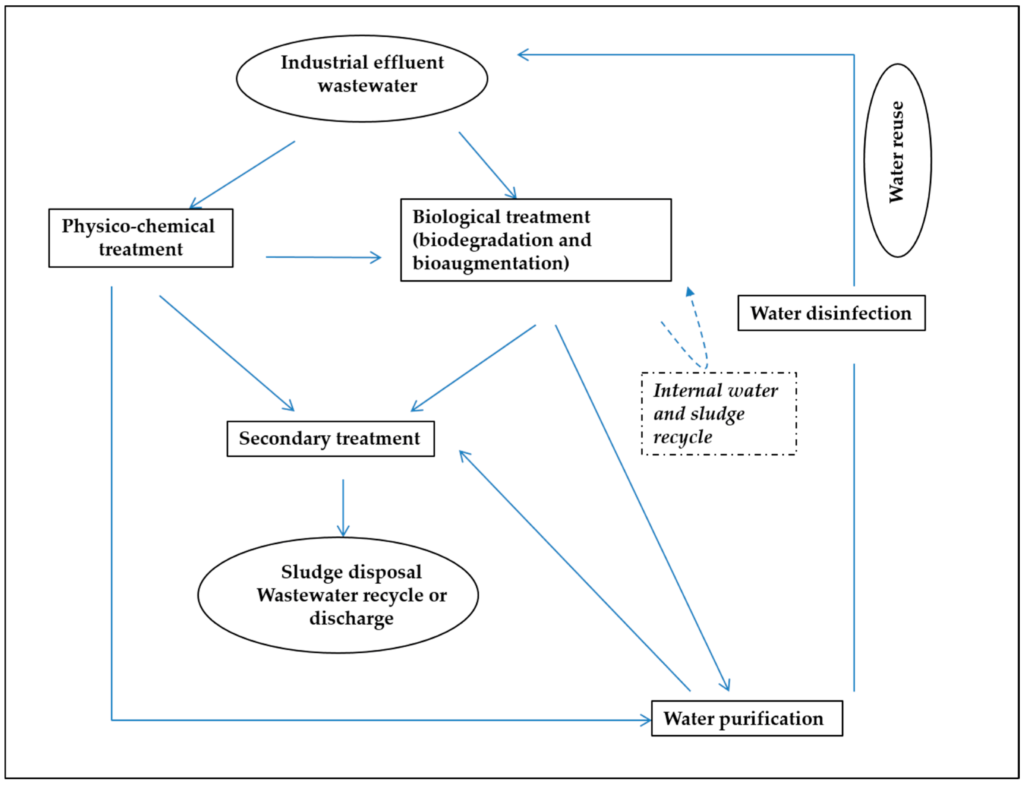Activated sludge systems are a cornerstone of modern wastewater treatment facilities. In these systems, a mixture of wastewater and biological sludge is aerated to degrade organic pollutants. While efficient, these systems sometimes struggle to break down specific contaminants or cope with high loads of waste. This is where bioaugmentation comes in. Bioaugmentation involves adding specialized microorganisms to the activated sludge to enhance its ability to degrade pollutants, making the treatment process more efficient. Improving wastewater treatment efficiency is not just beneficial for the environment but also crucial for public health and resource management.
How Bioaugmentation Works
The Process of Introducing Specialized Microorganisms
In bioaugmentation, specific strains of microorganisms are introduced into the wastewater treatment system to address inefficiencies and enhance pollutant degradation. These microorganisms could be naturally occurring or specially cultured to target specific contaminants.
Allochthonous and Autochthonous Bioaugmentation
Bioaugmentation can be broadly categorized into allochthonous and autochthonous types. Allochthonous bioaugmentation involves introducing microorganisms that are not originally part of the treatment system. These microorganisms are often chosen for their specific abilities to degrade certain types of pollutants. On the other hand, in autochthonous bioaugmentation, the focus is on enhancing the existing microbial community. Strategies include adding nutrients or substrates to promote the growth of beneficial microorganisms already present in the system.
Target Pollutants and Contaminants
Bioaugmentation is particularly effective against stubborn pollutants that conventional treatment methods struggle to remove. These can include:
- Heavy metals
- Organic pollutants (e.g., phenols, pesticides)
- Nitrogenous compounds (e.g., ammonia, nitrates)
Different microorganisms are adept at breaking down specific contaminants, making bioaugmentation a highly flexible and targeted approach.

Benefits of Bioaugmentation
Improved Removal of Specific Pollutants
One of the most significant advantages of bioaugmentation is its capacity to enhance the degradation of specific pollutants. This is especially useful for removing toxic or recalcitrant compounds that traditional methods falter against.
Faster Treatment Plant Start-Up
Starting a new wastewater treatment plant can be a slow process, as the microbial community needs time to develop and stabilize. Bioaugmentation can jump-start this process by introducing effective microorganisms from the outset, leading to quicker stabilization and operational efficiency.
Enhanced System Stability
A diverse and robust microbial community is key to a stable wastewater treatment process. By introducing specialized microorganisms, bioaugmentation can enhance the resilience of the system to fluctuations in pollutant load and environmental conditions.
Potential Reduction in Excess Sludge Production
One often overlooked benefit of bioaugmentation is the potential to reduce the amount of excess sludge produced. Well-targeted microorganisms can more effectively break down organic matter, resulting in less sludge that needs to be disposed of.
Challenges and Limitations
Survival of Introduced Microorganisms
One of the main challenges in bioaugmentation is ensuring the survival and activity of the introduced microorganisms. Factors such as competition with native microorganisms, predation, and environmental conditions can affect their survival.
Regulatory Considerations
The introduction of new microorganisms into the environment is subject to stringent regulatory scrutiny. Compliance with local and international regulations can be cumbersome and may affect the implementation of bioaugmentation.
Cost-Effectiveness Concerns
While bioaugmentation can offer significant benefits, the costs associated with developing and implementing this technique can be a concern. There are expenses related to culturing specialized microorganisms, monitoring their performance, and ensuring regulatory compliance.

Factors Affecting Bioaugmentation Success
Selection of Appropriate Microorganisms
The choice of microorganism is critical for the success of bioaugmentation. The selected strains should be capable of degrading the target pollutants efficiently while maintaining high survival rates in the treatment environment.
Environmental Conditions in the Treatment System
The effectiveness of bioaugmentation is also influenced by environmental conditions such as temperature, pH, and oxygen levels. For optimal results, these conditions need to be carefully monitored and maintained.
Frequency and Method of Application
How often and in what manner you introduce the microorganisms can significantly impact their effectiveness. Continuous or periodic addition, methods of inoculation, and the concentration of microorganisms introduced are all factors to consider.
Case Studies
Case Study 1: Industrial Wastewater Treatment Plant
An industrial wastewater treatment plant dealing with high levels of phenolic compounds implemented a bioaugmentation strategy using a specialized strain of Pseudomonas putida. Within weeks, there was a marked reduction in phenol concentrations, and the plant’s overall efficiency improved by 25%.
| Parameter | Before Bioaugmentation | After Bioaugmentation |
|---|---|---|
| Phenol Concentration (mg/L) | 150 | 80 |
| Treatment Efficiency (%) | 60 | 85 |
Case Study 2: Municipal Wastewater Treatment Facility
A municipal wastewater treatment facility introduced autochthonous bioaugmentation techniques to enhance nitrogen removal. By promoting the growth of existing nitrifying bacteria, the facility saw a 30% reduction in effluent ammonia levels, leading to compliance with local discharge regulations.
| Parameter | Before Bioaugmentation | After Bioaugmentation |
|---|---|---|
| Effluent Ammonia (mg/L) | 12 | 4 |
| Compliance with Regulations | No | Yes |

Future Prospects
Emerging Research Areas
Research in bioaugmentation continues to evolve, with new studies focusing on the development of more effective microbial strains and the integration of bioaugmentation with other advanced treatment technologies like membrane bioreactors and advanced oxidation processes.
Potential Integration with Other Advanced Treatment Technologies
Combining bioaugmentation with technologies like membrane bioreactors or advanced oxidation processes can create synergistic effects, further enhancing the efficiency and effectiveness of wastewater treatment systems.
Ethical Considerations of Using Genetically Engineered Microorganisms
The use of genetically engineered microorganisms for bioaugmentation is a promising but ethically complex area. Concerns over their impact on natural ecosystems and long-term sustainability need careful consideration and robust regulatory frameworks.
Conclusion
Bioaugmentation in activated sludge systems holds significant potential for enhancing the efficiency and effectiveness of wastewater treatment. By introducing specialized microorganisms, we can better target specific pollutants, accelerate plant start-up times, and enhance system stability. However, the success of this technique depends on careful selection of microorganisms, optimal environmental conditions, and compliance with regulatory frameworks. Continued research and optimization are crucial to realizing the full potential of bioaugmentation in wastewater treatment.
For those in the field, it’s time to push for further research, practical trials, and ultimately, the adoption of bioaugmentation as a mainstream technique. Together, we can make wastewater treatment more efficient, effective, and environmentally friendly.
Resources on Bioaugmentation in Activated Sludge
Scientific Articles
- Overview of Bioaugmentation in Activated Sludge Processes
- Recent Advances in Bioaugmentation for Wastewater Treatment
- Microbial Community Dynamics in Bioaugmented Activated Sludge
Government and Regulatory Resources
- EPA Guidelines on Bioaugmentation in Wastewater Treatment
- European Commission Report on Innovative Wastewater Treatment Technologies
Industry Publications
- Water Environment Federation: Bioaugmentation Best Practices
- International Water Association: Bioaugmentation Case Studies
Educational Resources
- Introduction to Bioaugmentation in Wastewater Treatment (Online Course)
- Webinar: Implementing Bioaugmentation in Municipal Wastewater Plants
Remember to verify these links and update them with actual, current resources on bioaugmentation in activated sludge for wastewater treatment.